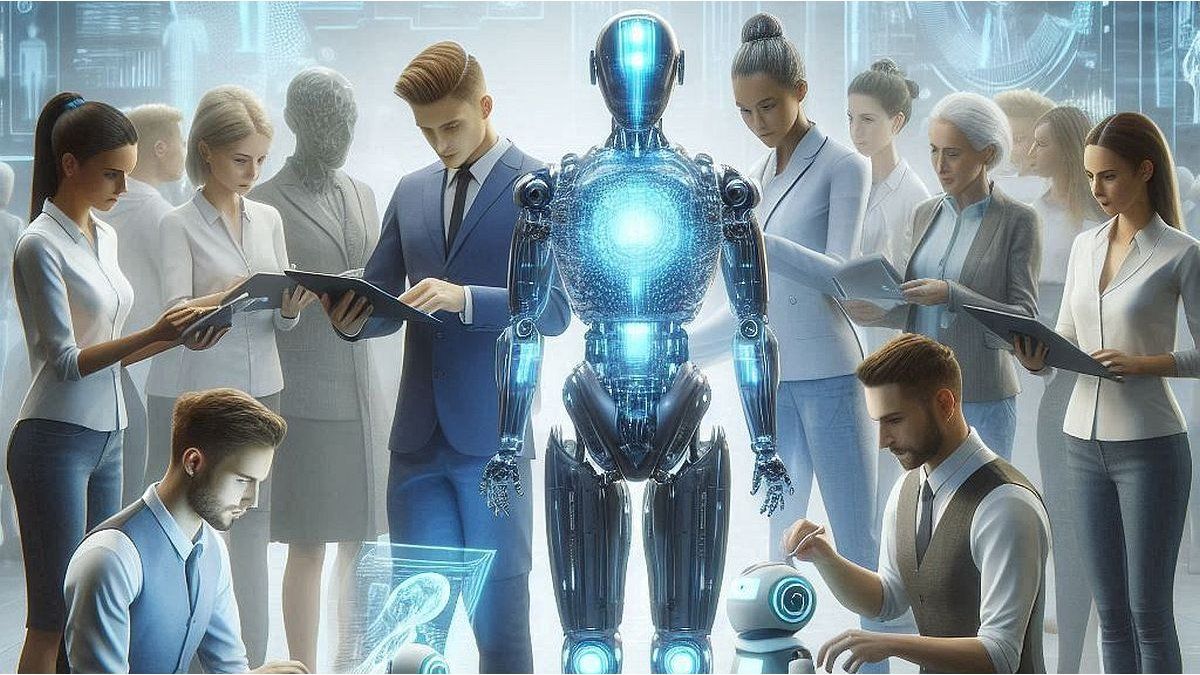The generative AI It is a type of AI that uses very advanced algorithms to create new and original content. (text, images, music, videos). It is always from existing patterns. This technology replicates the information provided, but also generates innovative results that were not present in the information that we provide in this way imitating the processes of human thought, higher. Example of the IAG: the chatgpt, Geminis, Deepseek, Claude.
In this report, I evaluated the potential impact of the Advanced Language Models (It is a type of AI to understand, generate and manipulate text), read examples in the previous paragraph, in private wage employment in Argentina, using a task -based approach.
Main aspects of the impact that highlights employment and work with AI
It is estimated that a 55% of the private formal employment (approximately 3,410,000 million private jobs), of the current 6.2 million, is found in labor occupations where their normal and usual tasks could be executed by generative and are highly enhanced to automation.
Heterogeneous impact by professional qualification and tasks
Highly qualified: professionals such as software developers, graphic designers and digital marketing experts can see changes in the nature of their work, where generative AI can automate routine tasks, allowing them to focus on more creative and strategic activities.
The occupations of managers (CEO; high managers, almost 99% and scientific and intellectual professionals almost 91% present the highest exposure. We talk about hierarchical. Approximately 95% of the 1.5 million hierarchical of the 6.2 million formal.
Little qualified*: workers in manual or customer service can face greater automation risks, since generative AI can handle simple and repetitive interactions.
The unqualified work (employees of collective work agreement) shows a much lower exhibition. Approximately 35% of the 4.7 million formal.
Heterogeneous impact by sectors
Technology: High adoption of generative for software development, reduction of production times and improvement in product quality.
Marketing and advertising: Automatic content and customization generation, impacting the way in which campaigns are designed and executed.
Health: virtual assistants and medical report generation, improving patient care efficiency, although with ethical considerations.
Education: Personalized teaching tools to adapt to the needs of students, changing the role of teachers.
Financial intermediation and trade: high adoption of generative AI.
Energy, community and personal services, real estate activities and health also have high exposure. The sectors that require greater intensity of physical work (construction, fishing, agriculture) are the least exposed.
Impact of replacement vs. Complementarity
In some cases, generative AI can replace specific functions, especially in repetitive or low -level tasks, which can lead to employment reduction in certain sectors.
In many other cases, the generative AI acts as a tool that complements human work, improving productivity and allowing employees to perform more complex functions. This can lead to the creation of new roles that require skills to work together with advanced technologies.
Occupations are identified with potential Complete substitution (22% of the most exposed employment, mainly in office jobs) and Partial substitution (4%, mainly in commerce and services)
The largest category is to complementarity (71% of the most exposed employment)where AI facilitates and enhances human work, mainly in office employees, scientific and intellectual professionals, and vendors.
The Partial complementarity of 4% It occurs in occupations that depend largely on human skills
Impact of my conclusion
The generative AI has the potential to significantly transform the Argentine labor market, although its real impact will depend on the speed and scope of its adoption, as well as the public policies implemented.
The high exposure of the most qualified jobs suggests a change in the type of tasks and skills that will be valued in the future. While AI can automate routine intellectual tasks, it can also enhance the productivity of these professionals by allowing them to focus on more strategic and creative aspects of their work.
The heterogeneity of the sector impact indicates that some industries will experience deeper and more fast transformations than others. The sectors with high intensity of information and language processing (finance, education) are particularly susceptible.
The distinction between substitution and complementarity is crucial. While there is a risk of loss of jobs in certain areas (such as office jobs with repetitive tasks), the main trend seems to be towards complementation, which could lead to greater productivity, but also to the need for workers to acquire new skills to effectively collaborate with AI. As I always say, AI does not take away the work of anyone, they are the humans who are going to stay out if they are not trained in the future.
I underline the importance of state intervention through public employment policies and structural reforms that promote the adoption of AI to increase productivity, but also mitigate the possible negative effects on employment and inequality and reduction of labor conflicts.
The impact of the generative AI on private employment is complex and varied. It can lead to both opportunities for improvement and creation of new roles and significant challenges in the Retraining (Process of maintaining employees in a company through the resentment and training of new skills) and adaptation of the workforce. Appropriate policies and strategies are fundamental to maximize benefits while mitigating the risks associated with change in employment.
He Retraining It is core for the workforce to be prepared for the challenges of the future of work and the new opportunities that arise from the advance of the technological.
In short, I propose that the incorporation of AI is inevitable and potentially beneficial for productivity, but requires active management by the State and social actors to ensure that its benefits are distributed equally and that workers (employers, employees and independent) are prepared for changes in the world of work and train.
Just as it happened in the 3 previous industrial revolutions, the world continued to turn and we all had to adapt.
Source: Ambito
David William is a talented author who has made a name for himself in the world of writing. He is a professional author who writes on a wide range of topics, from general interest to opinion news. David is currently working as a writer at 24 hours worlds where he brings his unique perspective and in-depth research to his articles, making them both informative and engaging.




